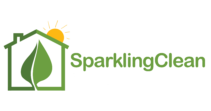The shift towards sustainability has permeated every aspect of our lives, including the way we maintain our homes. The traditional house cleaning arsenal, often filled with harsh chemicals and single-use plastics, is being overhauled. The latest trends in eco-friendly house cleaning not only aim to minimize environmental impact but also promise a healthier living space for our families. Let’s explore the innovative and green trends taking the cleaning industry by storm.
1. Refillable and Zero-Waste Products
The zero-waste movement has sparked the creation of refillable cleaning products. Gone are the days when a finished bottle of cleaner meant another plastic container in the trash. Companies are now offering concentrated refills and sturdy, reusable bottles designed to last. These concentrate refills often come in biodegradable packaging and result in less transportation pollution due to their smaller size.
2. Plant-Based and Biodegradable Cleaners
The demand for plant-based cleaners has surged, encouraging manufacturers to replace toxic chemicals with natural ingredients like vinegar, essential oils, and citric acid. These biodegradable cleaners offer a powerful clean without the risk of contaminating waterways or harming wildlife.
3. Sustainable Tools and Accessories
Eco-friendly cleaning isn’t just about the liquids and powders; it’s also about the tools we use. Sustainable materials like bamboo, organic cotton, and coconut fibers are now being used to create scrub brushes, cloths, and mops. These materials are not only more sustainable than their plastic counterparts, but they’re often more durable and compostable at the end of their life.
4. DIY Cleaning Solutions
There’s a growing penchant for homemade cleaning solutions using ingredients found in most pantries. Baking soda, lemon juice, and white vinegar can tackle many household cleaning tasks without the need for commercial products. The DIY trend empowers consumers to take control of what goes into their cleaning products, reducing the need for packaging and harmful substances.
5. Steam Cleaning
Steam cleaning is a powerful eco-friendly option that uses high temperatures to sanitize surfaces without chemicals. The steam effectively lifts dirt and grime and can kill dust mites and mold spores without additional products. As people seek purer methods to clean their homes, the use of steam has become increasingly popular.
6. Microfiber Revolution
Microfiber cloths are an eco-friendly cleaning trend that can reduce waste and the need for cleaning products. These cloths are designed with fibers that have more surface area to trap dirt effectively. Because they can clean with just water, microfiber cloths can significantly decrease the amount of cleaning agents needed.
7. Minimalist Cleaning Products
Another trend making waves in the eco-friendly cleaning space is the minimalist approach. This involves using a smaller number of versatile products that can handle multiple cleaning tasks, reducing the need to purchase and dispose of numerous specialized cleaners.
8. Green Certification and Transparency
As consumer awareness increases, there is a greater demand for transparency in cleaning products. Certifications like Green Seal or EcoLogo assure that products meet strict environmental standards. This trend helps consumers identify genuinely eco-friendly products and avoid “greenwashing.”
Conclusion
The latest trends in eco-friendly house cleaning reflect a growing consciousness about health and environmental impact. By adopting refillable containers, biodegradable ingredients, sustainable tools, and minimalist practices, we can create a cleaner, greener home. As we incorporate these innovations, we contribute to a larger movement towards a sustainable and toxin-free future. It’s more than just a cleaning routine – it’s a commitment to a healthier planet and ourselves.
And remember, for a truly sparkling clean and eco-friendly home in San Francisco, consider the services of Sparkling Clean!

Brazilian mother of two and CEO of Sparkling Clean Pro & Green Living Supplies since 2005. Working as an ecological advocate within the cleaning industry & aiding immigrant families and women at risk.










